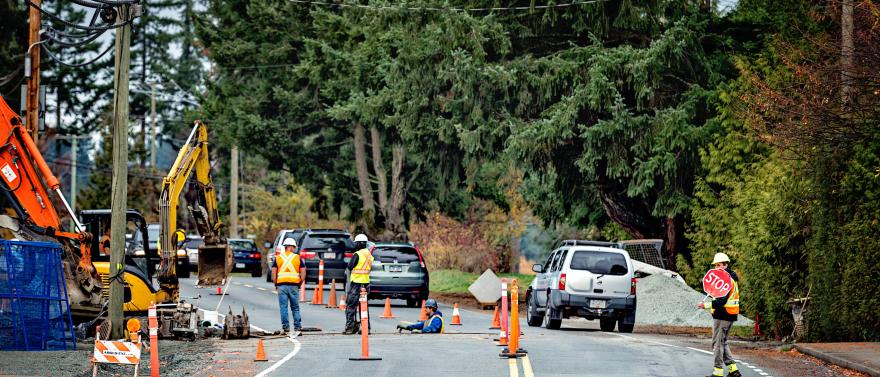With aging infrastructure due for replacement, provincial housing targets, and desires for new amenities, the District is taking a strategic approach to managing our infrastructure. This is designed to ensure reliable services now and in the future, while being mindful so that residents aren't impacted by sudden tax increases, and instead the community has sufficient funding put aside for planned investments.
Highlights of infrastructure planning
The District approaches planning for the future using an “Integrated Planning Framework", which won the 2024 Union of BC Municipalities’ President’s Committee Choice Award.
This ties together various planning processes and strategies so District plans are talking to each other through an ongoing planning cycle. From the Official Community Plan and long-term financial plans right down to individual projects, Integrated Planning and Reporting has enabled the District to align the different departments towards a common goal and measurable metrics.
This process ensures that infrastructure decisions align with the Official Community Plan, addresses infrastructure deficiencies and reflect community priorities.
Much of our infrastructure was built between the 1960s and 1980s, during a time when communities across Canada weren’t setting aside funds for future replacement. To address this, the District has taken proactive steps by developing an Asset Management Plan — it was adopted in 2017, ahead of many communities. This plan helps us understand what infrastructure we have, when it will need replacing, and how much it will cost.
In 2018 the District began setting aside more funding for needed infrastructure replacement. An Infrastructure Levy, which incrementally increases property taxes typically by 1.25% a year (or $35 to the average homeowner), helps gradually build reserves for these upcoming projects without a major spike for taxpayers.
The District is in the process of updating its master plans, including the Water Master Plan, Sewer Master Plan, Transportation Master Plan, Integrated Stormwater Management Plan, Engineering and Development Servicing Standards. These updates are complemented by zoning updates and contribute to a revised Development Cost Charge Bylaw and the introduction of an Amenity Cost Charge Bylaw, ensuring that developers contribute to the community’s infrastructure needs.
Local governments use Development Cost Charges (DCCs) and now Amenity Cost Charges (ACCs are a new program) to levy charges for the infrastructure impacts of new developments.
The DCC program ensures that development finances their impact on infrastructure capacity.
DCCs can be reduced by up to 30% for-profit rental and affordable rental housing developments.
In 2024, major capital projects got underway and large assets began to be replaced. A typical total annual budget (including operational funding) for the District around 2020 was $30M—that amount alone was spent on capital improvement and replacement in 2025, with significant investments in sewer and water systems and improvements linked to the Keating Flyover project. This work was done while minimizing financial strain on residents by ensuring the funding had been put aside proactively, as well as through grant funding.
In 2026 and 2027 capital expenditures will remain at this level and then are expected to lessen; this work is funded by reserves (savings) thanks to the Infrastructure Levy, grants, and other sources such as water and sewer utility fees.


